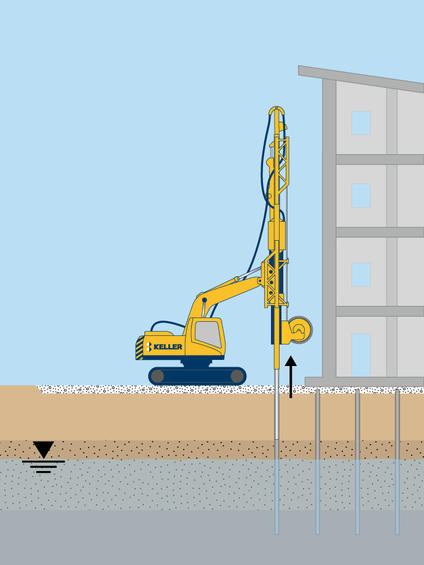The earthquake drain ground improvement method minimises bearing capacity failures and settlement during and immediately after a seismic event. It mitigates liquefaction by limiting excess pore pressures generated during seismic events to levels less than those that could trigger liquefaction.

Common uses
Process
Earthquake drains consist of corrugated, perforated pipes wrapped in a special non-woven, polypropylene filter fabric.
They are driven into the ground using a vibrating mandrel, consisting of a heavy-gauge steel pipe with three equally spaced fins to transfer vibrations to the adjacent soil. The vibrations result in densification of the granular soils, assisting in the liquefaction mitigation.
The earthquake drain is fed into the steel pipe, which is then driven into the ground down to treatment depth with the drain inside of it. The steel installation pipe is then vibrated back out. The end plate stays in the soil so that as the steel pipe comes out the earthquake drain stays in place.
The nominal 75mm (3 inches) diameter drain core is tightly wrapped with geotextile filter fabric (selected for its filtration properties), allowing free access of pore water into the drain, while preventing the piping of fines from adjacent soils. The geotextile wrap is very durable and able to withstand the handling and abrasion that occurs during installation. Several core designs and fabric types can be used to fit a variety of drainage applications and soil classifications.
Advantages
Quality assurance
Keller is highly experienced in the design and construction of this technique particularly in North America where Hayward Baker has designed and installed millions of metres of earthquake drains.